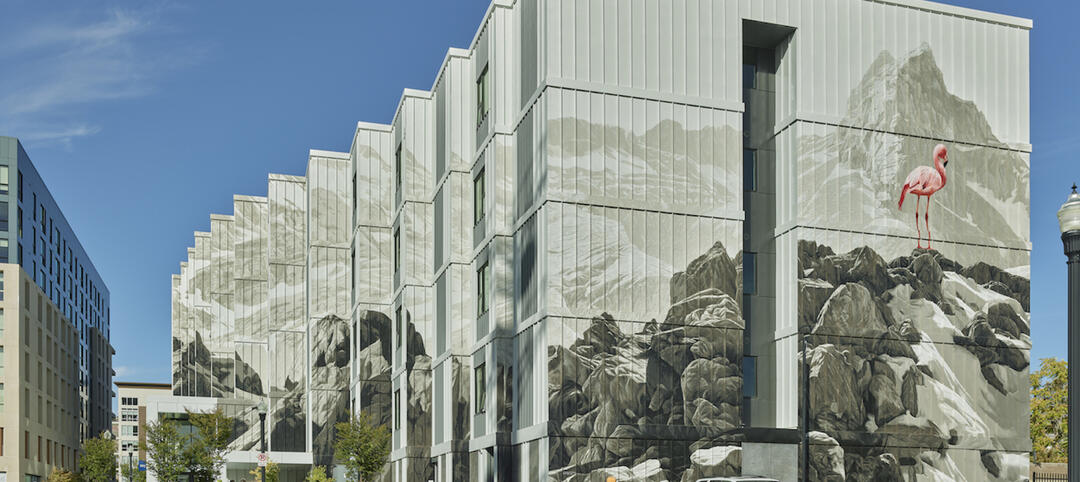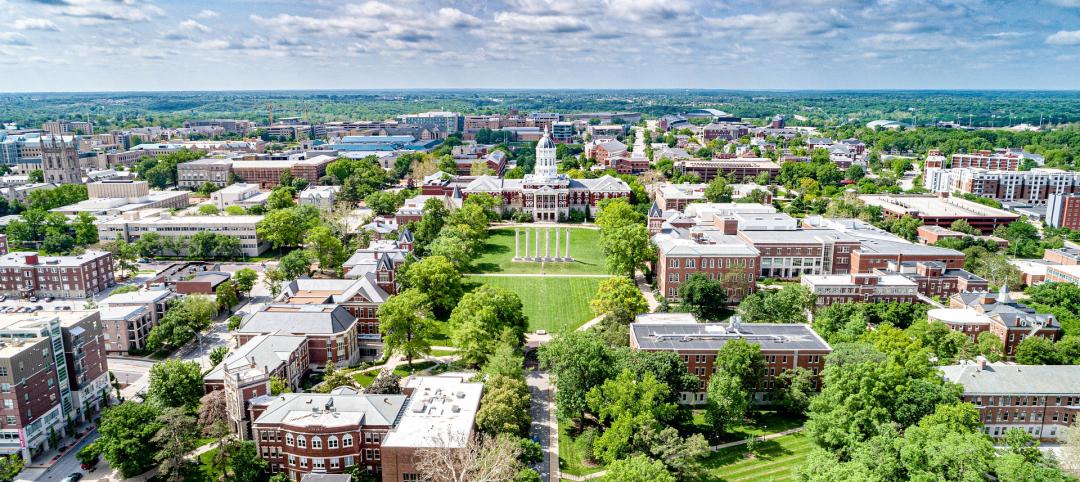The economic benefits of building healthy places are outlined in a new publication from the Urban Land Institute (ULI) –Building for Wellness: The Business Case. Released this week at the ULI Spring Meeting in Vancouver, the report examines the investment payback on incorporating amenities that promote health and wellness, how developers have pursued this objective, and the resulting market response.
The report was prepared as part of ULI’s Building Healthy Places initiative, a two-year global program of work that seeks to raise awareness of the connections between health and the built environment, and to encourage the development of communities that are conducive to healthy living.
Building for Wellness profiles 13 completed projects from around the world, including ten in the U.S., two in Asia Pacific and one in Europe, each representing one of three development strategies – renovation / redevelopment, new construction and master-planned communities.
The report finds several common experiences across the developments examined:
- Developers received a better-than-anticipated market response, and their expectations were exceeded in terms of leasing times, sales rates, rental and sales premiums and waiting lists.
- The development costs attributable to the inclusion of wellness components were generally reported to be a minimal percentage of the overall development budget. Exceptions to this were limited to cases of highly amenitized master-planned communities, where the additional costs were partially offset by homebuilder and resale fees.
- The operating expenses for the maintenance of wellness components were typically minimal, with these costs in master-planned communities being covered by homeowner fees. Expenses such as staff to market the wellness amenities at a business park or a full-time groundskeeper were considered worth the additional investment.
- Programming, such as fitness classes, walking groups and wellness seminars, were widely used to offer additional opportunities as well as encourage the use of wellness facilities. An added perk: such programming can often be provided through partnerships with nonprofit organizations and local businesses.
Three of the projects featured – Selandra Rise in Casey, Australia; Mueller in Austin, Texas; and Park 20 I 20 in Haarlemmermeer, Netherlands – are currently under study by universities and foundations regarding their impact on workers’ and residents’ health. Two universities have previously concluded that Mueller residents increased their physical activity by 40 to 50 minutes per week after moving into the development
“To improve the well-being of our communities, we need to demonstrate that building for wellness makes good business sense,” said ULI Chief Executive Officer Patrick L. Phillips. “Building for Wellness: The Business Case outlines clear examples of how developers have built exemplary projects that help improve the health of their users, without incurring prohibitive additional costs and with the benefit of improving the commercial performance of their investment.”
Projects profiled include:
- The Century Building in Pittsburgh, Penn. – An example of redevelopment, the project opened in 2009 with 60 workforce and market-rate apartments, 12,000 square feet of office space and 10,000 square feet of retail. Located in the downtown area, the development was the first in the city to achieve LEED Gold certification and has a Walk Score® rating of 100, indicating the location is a “walker’s paradise”.
About 15 percent of the construction budget was allocated to sustainable and wellness features. Clean indoor air was ensured through a non-smoking policy, use of non-toxic building materials, a geothermal heating system and a recovery ventilation system which have led to residents with asthma and allergies claiming their condition has improved since moving to the building. Secure bicycle storage is included for use by residents and office tenants, as well as an onsite fitness center.
The business case: the project was fully leased within 90 days, six months ahead of its original schedule, and it maintains a remarkably high 90-percent retention rate. Ongoing maintenance costs for features such as the fitness center and bicycle storage are minimal.
- Park 20 I 20 in Haarlemmermeer in the Netherlands -- A new development, the project is located on an 11 hectare (28 acre) site approximately 8 kilometers (5 miles) outside of Amsterdam. The first phase of a mixed-use business park, it was completed in April 2013, with additional phases to be completed by 2018. The project is only 100 meters (330 feet) from train and bus transit, and with a Walk Score® rating of 72, it is considered to be a “very walkable” location.
The development’s buildings ensure clean indoor air by maximizing air circulation, eliminating traditional ductwork, providing operable windows and incorporating green walls. The shapes of the buildings maximize natural light, and artificial light is provided through LEDs, which are the closest alternative to sunlight. Park 20 I 20 is a car-free site, with multiple walking and biking paths across the development; and it provides access to offsite fitness facilities. The development also included onsite greenhouses that are used to grow food used in the onsite restaurant.
The business case: a project that is currently 100-percent leased at rates of €200 per square meter, representing a premium of 12 percent over local Class A new office buildings. Phase II of the office buildings is also 100-percent pre-leased.
- Selandra Rise in Casey, Australia – A master-planned community on 115 hectares (284 acres) in the city of Casey, which is 50 kilometers (30 miles) south of Melbourne. It incorporates 65 townhouses and 793 two, three, four and five detached houses. The first phase, completed in 2011, features a range of health and wellness features.
All homes are within 300 meters of parkland and trails, providing easy pedestrian and bicycle access to small pocket parks, and larger destination parks, as well as an outdoor fitness station. Reliance on cars is reduced by the inclusion of bike lanes and tree-lined sidewalks with a “way-finding” system designed to show how quickly people can walk or cycle to their destination. A community facility centrally located in the development arranges up to 30 programs per month to promote a healthy lifestyle and social interaction.
The business case: Selandra Rise is the fastest selling community project in Australia with prices averaging $7,000 to $12,000 (in Australian dollars) higher than competitor projects. The cost of wellness components was only one to two percent of the total project cost, and operating costs are similar to those of the developer’s other projects.
In addition to the Century Building, Park 20 I 20 in Haarlemmermeer, and Selandra Rise, other developments profiled in the publication are: ECO Modern Flats in Fayetteville, Ark.; Innovation Park, Charlotte, N.C.; 1221 Broadway, San Antonio, Texas; Jackson Walk, Jackson, Tenn.; Via6, Seattle, Wash.; The Interlace, Singapore; Via Verde, New York, N.Y.; Grow Community, Bainbridge Island, Wash.; Rancho Sahuarita, Tucson, Ariz.; and Mueller, Austin, Texas.
Copies of Building for Wellness are now available for download.
Related Stories
| Aug 31, 2022
A mixed-use development in Salt Lake City provides 126 micro units with mountain views
In Salt Lake City, a new 130,000-square-foot development called Mya and The Shop SLC, designed by EskewDumezRipple, combines housing with coworking space, retail, and amenities, as well as a landscaped exterior for both residents and the public.
Mass Timber | Aug 30, 2022
Mass timber construction in 2022: From fringe to mainstream
Two Timberlab executives discuss the market for mass timber construction and their company's marketing and manufacturing strategies. Sam Dicke, Business Development Manager, and Erica Spiritos, Director of Preconstruction, Timberlab, speak with BD+C's John Caulfield.
Giants 400 | Aug 29, 2022
Top 80 Senior Living Facility Architecture + AE Firms for 2022
Perkins Eastman, Hord Coplan Macht, Ryan A+E, and Stantec top the ranking of the nation's largest senior living facility architecture and architecture/engineering (AE) firms for 2022, as reported in Building Design+Construction's 2022 Giants 400 Report.
Giants 400 | Aug 29, 2022
Top 70 Student Housing Facility Architecture + AE Firms for 2022
Niles Bolton Associates, Mithun, Gensler, and Perkins and Will top the ranking of the nation's largest student housing facility architecture and architecture/engineering (AE) firms for 2022, as reported in Building Design+Construction's 2022 Giants 400 Report.
| Aug 29, 2022
Montana becomes first U.S. state to approve 3D printing in construction
Montana is the first U.S. state to give broad regulatory approval for 3D printing in building construction.
Giants 400 | Aug 29, 2022
Top 175 Multifamily Sector Architecture + AE Firms for 2022
Perkins Eastman, Solomon Cordwell Buenz, KTGY, and Gensler top the ranking of the nation's largest multifamily sector architecture and architecture/engineering (AE) firms for 2022, as reported in Building Design+Construction's 2022 Giants 400 Report. Note: This ranking includes all multifamily sector work, including apartments, condos, student housing, and senior living facilities.
| Aug 26, 2022
Idaho Building Code Board considers gutting large part of state energy code
Idaho Building Code Board considers gutting large part of state energy code.
Multifamily Housing | Aug 25, 2022
7 things to know about designing for Chinese multifamily developers
Seven tips for designing successful apartment and condominium projects for Chinese clients.
Giants 400 | Aug 25, 2022
Top 155 Apartment and Condominium Architecture Firms for 2022
Solomon Cordwell Buenz, KTGY, Gensler, and AO top the ranking of the nation's largest apartment and condominium architecture and architecture/engineering (AE) firms for 2022, as reported in Building Design+Construction's 2022 Giants 400 Report.
University Buildings | Aug 25, 2022
Higher education, striving for ‘normal’ again, puts student needs at the center of project planning
Sustainability and design flexibility are what higher education clients are seeking consistently, according to the dozen AEC Giants contacted for this article. “University campuses across North America are commissioning new construction projects designed to make existing buildings and energy systems more sustainable, and are building new flexible learning space that bridge the gap between remote and in-person learning,” say Patrick McCafferty, Arup’s Education Business Leader–Americas East region, and Matt Humphries, Education Business Leader in Canada region.

















